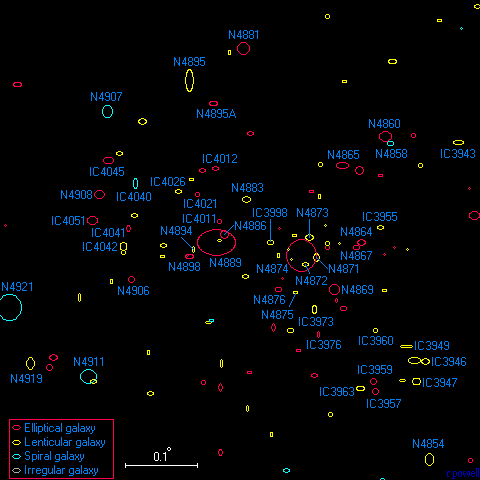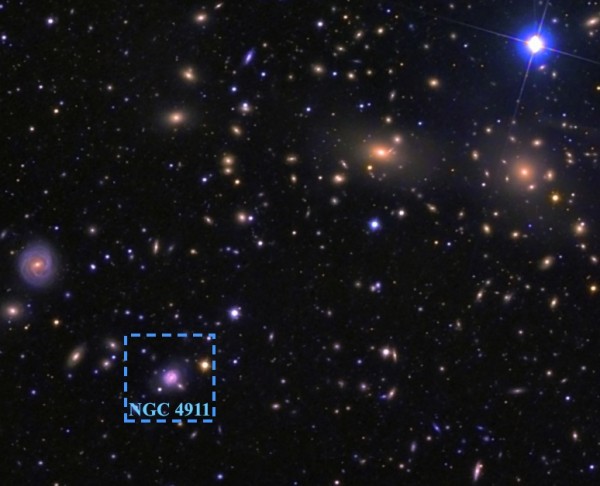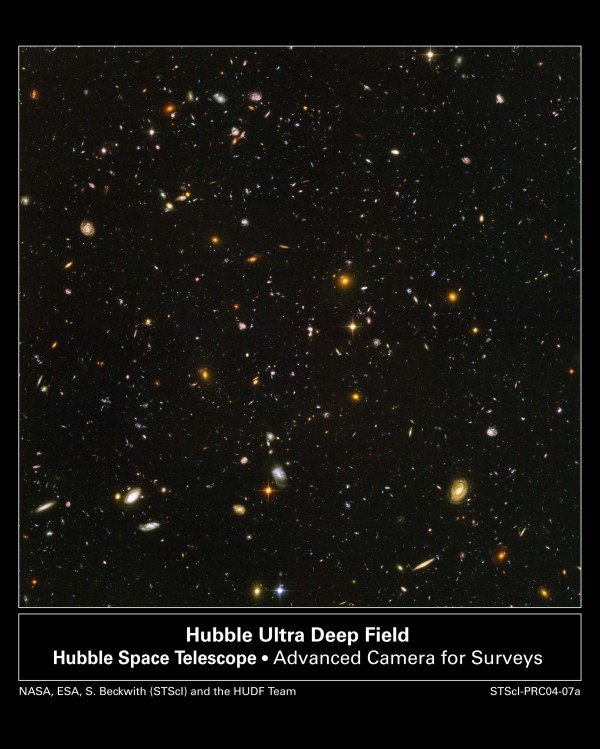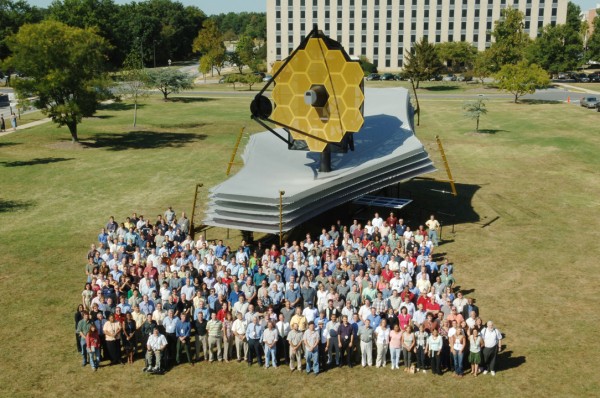"The cave you fear to enter holds the treasure you seek." -Joseph Campbell
Space, as you know, is mostly empty, as the typical distance between galaxies far exceeds the size of the galaxies themselves.
But in a few select regions of the Universe, where the mass density is unusually above average, galaxies cluster together by the thousands. The closest huge cluster to us like this is the Coma Cluster, containing more galaxies than 95% of all known galaxy clusters.
One of the first thing you'll notice about these galaxies is, unlike our Milky Way, Andromeda, and the vast majority of galaxies in our neighborhood, there are practically no spiral galaxies in the Coma Cluster, particularly towards its heart.
In fact, if we construct an atlas of the galaxies in the heart of Coma, we find that spirals are outnumbered by more than 10-to-1 here.
These spirals, undeniably, are unlikely to last very much longer in this chaotic environment. Let's make an example out of one of these spirals to get a better look at what we're talking about.
NGC 4911 is a spiral galaxy pretty similar in both mass and size to our Milky Way. Fortunate up until this point to have dodged the other huge galaxies in its vicinity, all it will take is one major merger to destroy its glorious spiral arms and transform it into the much more common elliptical shape seen in its neighbors.
Recently, however, the Hubble Space Telescope has undertaken a large number of observations of this galaxy, across four different wavelength bands, for a total of 28 hours and generating the following composite, hi-resolution image.
At a distance from us of around 320 million light years, the entire galaxy -- extended dust lanes and all -- takes up less than one arc-minute, or 1/60th of a degree, on the sky.
And with hot pink highlights around its arms, and light-blocking dust painted atop its disk, NGC 4911, when we zoom in on the galaxy itself, tells us an all-too familiar story.
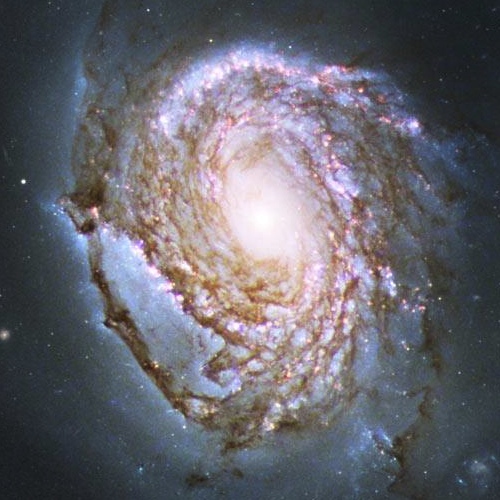
Fueled by tidal gravitational interactions with nearby, passing galaxies and/or minor mergers with neighboring dwarf galaxies, NGC 4911 is busy forming stars and accruing even more matter as it speeds through the Coma Cluster.
But if we're willing to look not at the bright stars of this galaxy, but farther out at the sparsest of its outskirts, there's a less familiar sight to be had, but one still found in the relatively nearby Universe. Let's take a look at a different galaxy, for comparison.
Less than 50 million light years away lies one of the biggest spiral galaxies in the Messier catalog: spiral galaxy M77. With a diameter of 170,000 light years -- practically double the Milky Way's -- M77 is notable for having both an active core and for having faint, but incredibly large extended outer spiral arms. (Fun fact: M77 has had more astronomical papers written about it than any other galaxy!)
Although it's more than six times as distant and just half the size, Hubble's incredible resolution (and a total of 28 hours observing time) have allowed it to paint an incredible picture of NGC 4911's outer arms as well!

Of course, you might notice, looking away from the galaxy itself, either behind the outer arms or off to the outside of them, that there are a whole host of not only points of light, but oddly shaped smudges, faint and, in many cases, multi-colored.
Hubble delivers high enough resolution that if I go back to the original image, I can easily pull out a section towards the edge of the outer, extended arms to show you what I'm talking about.
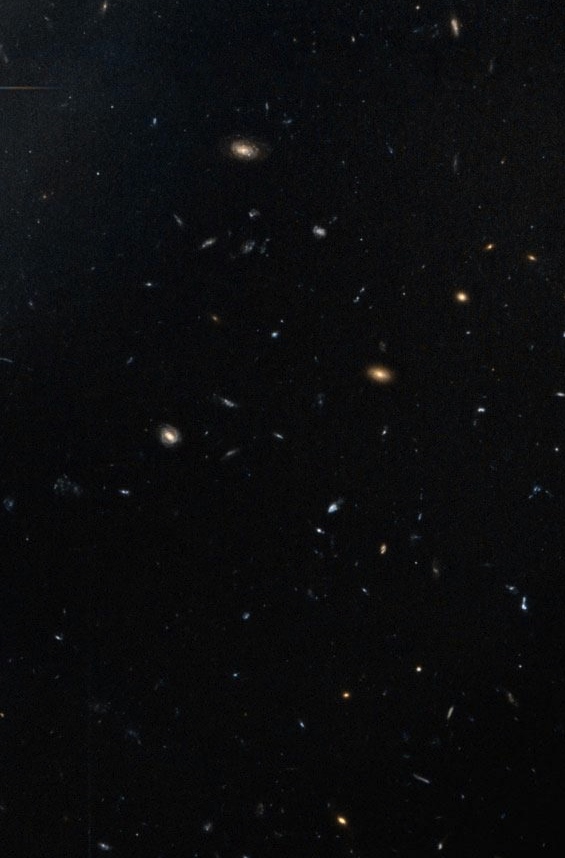
Out here, with 28 hours of exposure time, each of these distinct objects is its own faint, distant galaxy! You may remember how we discovered just how many galaxies are in the Universe, and it was by taking a very deep photograph of a blank patch of sky using this very same telescope!
The Hubble Ultra Deep Field, above, taught us that, in a region of space just 11 square arc-minutes in area, the Universe contains 10,000 galaxies! All told, that gives us a Universe with at least 120 billion galaxies (being a little more precise than my earlier video) within our range of visibility.
Now, the Hubble Ultra Deep Field spent about ten times as long looking at this region of space as we did to look at NGC 4911.
But you might be wondering -- if we looked for 28 hours instead of HUDF's 280 hours -- how many galaxies would we have seen? Well, this is a smaller region, at only about 6 square arcminutes, and there's a galaxy in the way. But if we look at the area outside of the galaxy, what do we find?
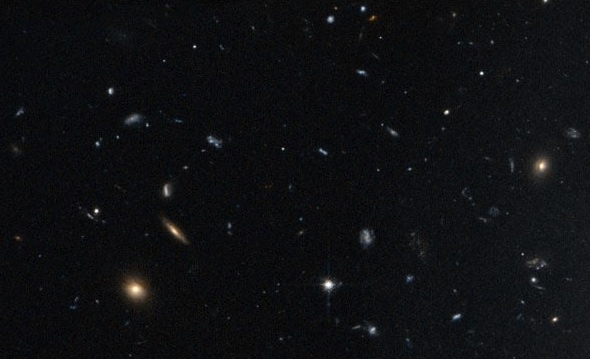
By my count, we find approximately 225 galaxies per square arcminute, which corresponds to -- if we extrapolate this to the whole Universe -- a Universe filled with between 30 and 35 billion galaxies!
Now, this is interesting, because the way we expect the Universe to work, observationally, is that the amount of detail we can see should be proportional to the square root of the observing time! So if we observe for ten times as long, we expect to see √10 times as many galaxies (about 3.16 times as many), which is pretty close to what we actually did see with the HUDF!
But it has to make you wonder how many galaxies we'd be able to see if we looked for 100 or 1000 times as long! We'll have to either be very patient, as 1000 times as long would take more than three years, or wait until there's a much larger telescope in space, particularly one capable of seeing deep into the infrared.
You know, something like the James Webb Space Telescope! (Not that you needed another reason to want it.) Every time we've looked deeper into the Universe, we've found a more populated, richer Universe that we'd ever known before. I can't wait until we take the next step, and I hope to bring the results to you as soon as we know them!
- Log in to post comments


